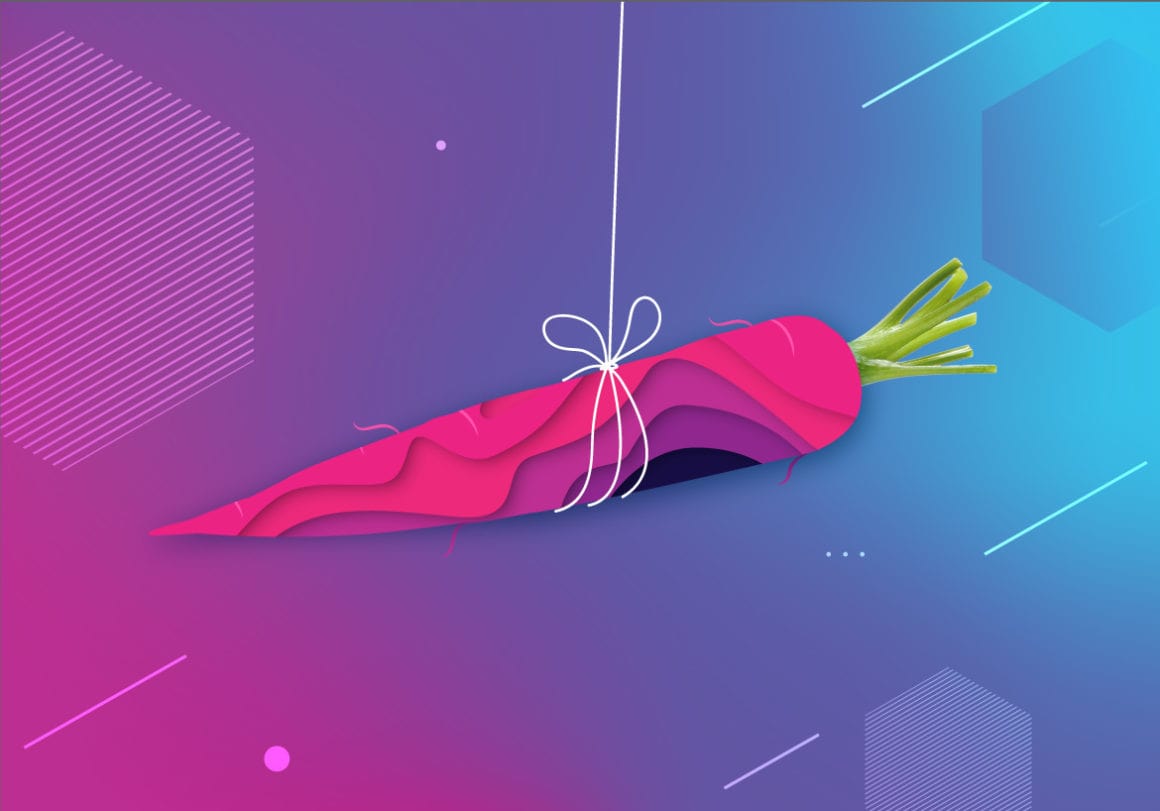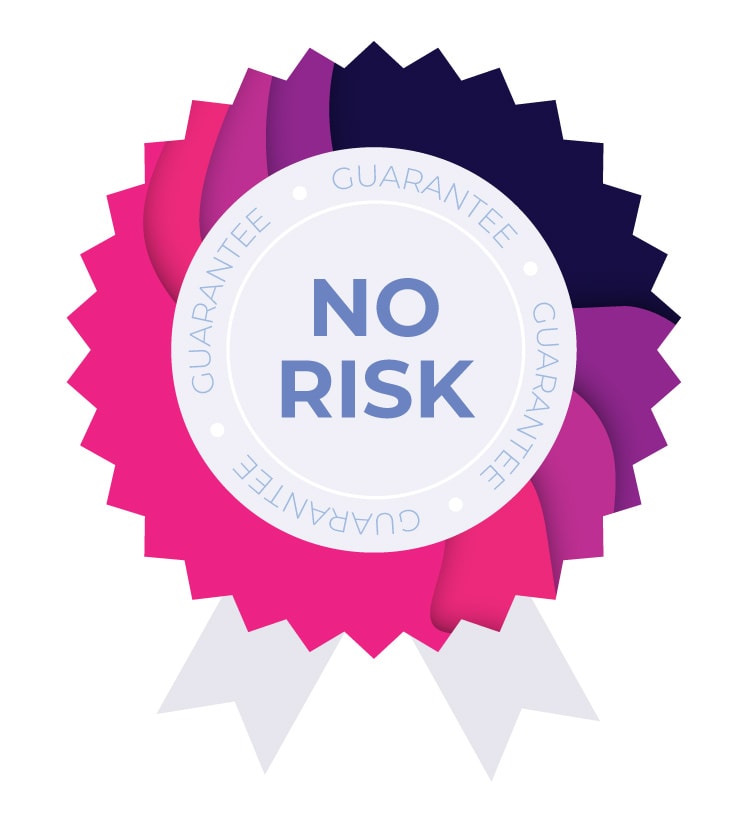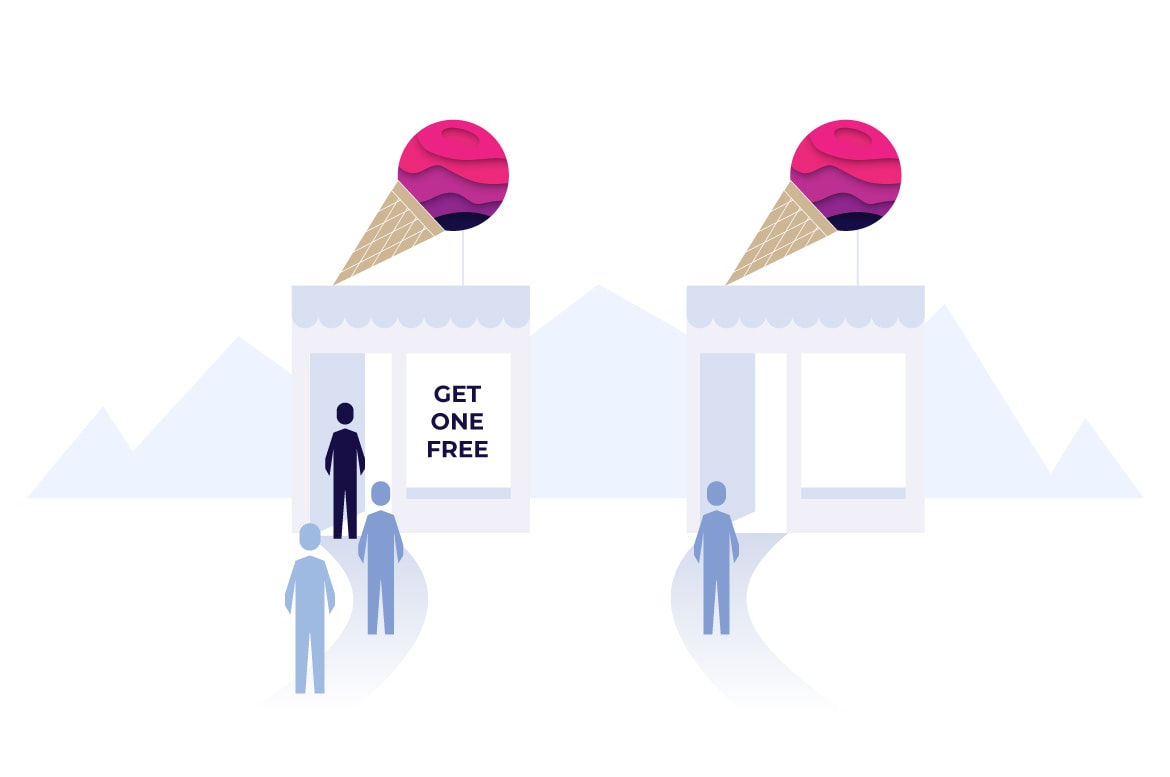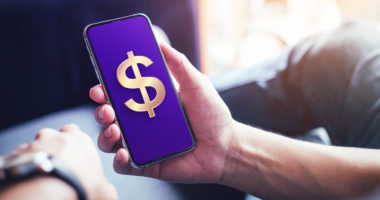Have you ever bought something from eBay or a similar auction site? If so there’s a good chance you witnessed the effects of loss aversion first hand. You probably came across someone who massively overpriced what they were selling. Sometimes to the point of being more expensive than a brand new item. This is that psychological principle in action and understanding it will help you skyrocket your advertising and performance marketing.
In this article, you’ll learn
- What loss aversion is
- How it impacts advertising
- How to overcome the negative aspects of loss aversion
- How to leverage loss aversion to enhance the appeal of your products
What is Loss Aversion and Loss Aversion Ma
In psychology, loss aversion is the feeling of discomfort that occurs when we suspect we might lose something. This feeling comes from the fact that people prefer to avoid loss than gain a similair value. First and foremost, we like the status quo.
People’s psychology is built around providing comfort to individuals, so avoiding unpleasant states os discomfort is the priority and drives the person to various coping strategies subconsiosly. Behavioral economics, and more specifically a whole branch of it called loss aversion marketing leverages them to the benefit of a marketer.
Loss aversion says that people are more worried about losing what they have than getting something extra. It’s basically summed up in the old expression “a bird in the hand is worth two in the bush.” We’d rather not lose $5 than gain $5 dollars.
It’s what powers the whole insurance industry and it’s why contestants on “Who Wants to Be a Millionaire” will avoid “risking” losing what they’ve won rather than continue, even if they are certain they know the answer.
Daniel Kahneman discovered this phenomenon when he ran an experiment giving one set of people a mug and another nothing. He then asked both groups to price the value of the mug. Those who were given the mug priced it higher than those who didn’t have it. This particular effect is known in psychology as “endowment effect” and is a common cognitive bias.
The act of owning the mug made them value it more than if they didn’t own it.
Loss Aversion Theory
The more complex dive into loss aversion theory reveals three emotional components that make up the loss aversion.
- People value avoiding losses more than equal potential gains.
- Loosing something causes greater pain than gaining something of equal value.
- People fear more losing something than they feel pleasure from getting something.
What is Loss Aversion and loss aversion marketing?
Loss aversion says that people are more worried about losing what they have than getting something extra. It’s basically summed up in the old expression “a bird in the hand is worth two in the bush.” We’d rather not lose $5 than gain $5 dollars.
It’s what the whole insurance industry is built on and it’s why contestants on “Who Wants to Be a Millionaire” will avoid “risking” losing what they’ve won rather than continue, even if they are certain they know the answer.
Daniel Kahneman discovered this phenomenon when he ran an experiment giving one set of people a mug and another nothing. He then asked both groups to price the value of the mug. Those who were given the mug priced it higher than those who didn’t have it.
The act of owning the mug made them value it more than if they didn’t own it.
What does Loss Aversion Mean for Performance Marketing
There is both a positive and a negative aspect of loss aversion for your advertising.
The negative implication of loss aversion is that prospective buyers will focus on the potential risks of a purchase and will give them more weight than the potential benefits. The human decision making process is not a rational one and you need to use it. You product marketing strategy should offer loss aversion strategies, meaning that you add should emphasize the way how customer may avoid losing a percieved value (time or money) if they take on your offer.
This is the sort of information that is great on a landing page. Here you can provide key information about your product and counter common fears, worries, and misconceptions.
You can also use a landing page to make loss aversion marketing work further by enhancing the appeal of your product.
You can encourage people to avoid missing out or a negative event. FOMO, or ‘fear of missing out’, is one of the most powerful loss aversion marketing strategies. So “don’t miss out” or “avoid (something negative), get our product”. This can work in both your initial advert and/or on your landing page where you can show both the benefits of your products and the dangers of missing
Now let’s look at some practical ways to overcome the negative aspects of loss aversion as well as how you can enhance your performance marketing with the positive aspects of loss aversion.
Loss Aversion Marketing Tactics
50 years of modern psychology has brought us understanding that human beings are not perfectly rational creatures, walking and breathing computers. They are rather flawed, full of cognitive bias, with a mind focused on providing comfort and stability.
Marketing campaigns should use that. They should model consumer behavior on loss aversion tactics and increase conversions by the dual approach: talking about potentials gains, as well as emphasizing ways to avoid loss.
Below there are some example uses of loss aversion in marketing.
1. Trials
Offering a trial is a really powerful way to hook customers. It helps overcome their fears (there is no financial cost!) and once someone is signed up, loss aversion works on your side. Instead of people worrying about whether or not they should try your product, people now wondering if they can live without it.
Now sometimes you can’t offer a free trial of your product but when you can offer a trial, you are providing yourself with a really powerful psychological tool.
Some streaming platforms have used this principle in a really cunning way: they don’t offer a trial but a subscription for a lower price provided that you don’t pause the subscription at any time. Once you do so, the price of a resumed subscription goes back to normal. This way people, in order to save money, keep paying for a subscription they don’t even use to keep the promotional price and end up in actually losing money.
2. Money back guarantees
If you can’t offer a trial, another option is a money back guarantee, a classic of many sales.
This, especially when combined with free returns, is a great way to overcome loss aversion as there is nothing to lose. From a customer perspective, it might as well be a free trial in another form, but in reality, it’s not. What actually happens in many cases is that customers can’t be bothered by the effort of getting their money back, packaging and sending back the product, they don’t bother applying even when they aren’t satisfied. In fact, due to “selection bias” — yet another cognitive bias where we value something more because we chose it — a customer may trick themselves into being satisfied with a product that is lacking.
This may fuel even more compulsive shopping, when for example people would buy several items of clothing to try on, with an assumption that they would return items that didn’t fit or which they didn’t like. A mechanism that worked for trials works here as well and sometimes people don’t return the additional items they purchased at all.
3. Outcome bias
During WW2, RAF tried to find the best way to protect their bombers by analysing the parts of the returning planes that were shot the most. This strategy wasn’t sucesful until someone pointed out that they should focus their analysis on the planes that didn’t return and were shot down. Well, that’s outcome bias or survivor bias. We judge events based on the final result not whether the same or better would have happened via a different route.
This can work well with loss aversion. By showing testimonials of customers who used your product, you are showing the benefit they gained, helping to overcome loss aversion and highlight the risk of not choosing the product. Outcome bias comes into effect as we believe the testimonials to be true and a result of the product because they were successful. There are two other factors we can use to enhance our testimonials.
Have you seen those celebrity endorsements for sports products (or just about anything really)? Well, that’s an appeal to authority. It’s using their expertise to lend authority (this is known as ‘aureola effect’) to our product. In reality, their claim has no extra strength than anyone else, but if an expert likes something, we assume they must have tried it out properly.
If you know of a high profile customer for your product, see if you can get a testimonial from them regarding your product. Find influensers and trendsetters that have credibility in your industry and ask them for a review, either by sending frree samples of your product, sponsored deal or organically.
b. Social proof
You don’t have to use authority figures to create a powerful testimonial. There is also social proof which uses the fact that we want to fit in with everyone else. If there are two ice cream shops, one with a large queue and another with no queue, which do you think is better? Sure you might still choose the no-queue shop because it’s convenient, but we’ll “know” that the best ice cream is in the other shop.
In our advertising, using testimonials from regular users helps the potential customer envision themselves using the product. But there are other tools we can use like reviews and even software which shows information about recent sales like Holler box for WordPress and Sales Pop, a Shopify addon.
One last important factor to note is that using testimonials and images from people of similar demographics is much more powerful. If you can properly segment your traffic then you can optimize your landing pages for specific demographics and devices users. You can use an ad tracker such as Voluum to segmentize your audience and dispaly diffent landing pages for people using certain device type or language.
4. The Scarcity Effect
Have you ever noticed how some companies always seem to be running a limited time sale…in some cases, it’s almost impossible to find a full price product. This is because these companies are trying to leverage the scarcity effect. Basically, we want things more if we are worried that we won’t be able to get them in the future. It’s a primal instinct as we seek to gather the limited resources around us and if we see something is running out, we priorities getting it now. Basically, we want to avoid the potential loss.
That’s why there are always rumors about possible supply shortages around any premiere of a new Apple product.
Product manufacturers often offer preorder option to appeal to loss aversion. People often purchase future products just to have a guarantee that the product will be available. Early acces creates a sense of relief that the risk of not getting the product have been avoided.
You can use this by offering limited time offers, showing a countdown until a product goes away, or listing how few items there are left. All of these will introduce a sense of scarcity and fear of missing out which can help drive a conversion.
Conclusion
Loss aversion is a really powerful psychological influence that can both hinder and help your marketing efforts. If it is properly considered and implemented then it will work for you and aid your efforts. But ignore it and you are imposing a high barrier for customers to summit.
Luckily, we have a range of tools and tricks to help us stay on the right side of loss aversion.
Key Takeaways
- Loss aversion means we worry more about losing what we have than gaining something new
- Loss aversion can hold people back from sales or it can help drive sales
- Testimonials, especially from authority figures and people similar to the customer help calm fears
- Free trials and Money back guarantees are really powerful ways to overcome loss aversion
- Running limited time sales can help provide the final push a customer needs.






